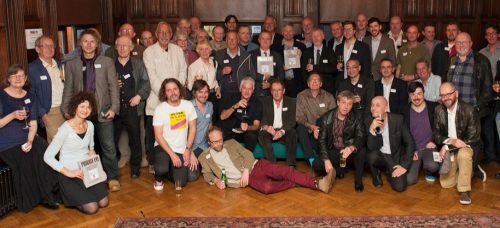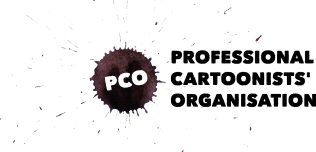Spectator Article: the future of cartooning

A rare mass-gathering of Private Eye cartoonists in 2013 (Rob Murray standing, 9th from right) Rob Murray writes in response to Nick Newman’s Spectator piece (see previous post): Nick Newman, one of the UK’s best and most prolific gag cartoonists, has written an article for this week’s Spectator about the challenges facing our art form. […]
Cartooning Global Forum
The Surreal McCoy writes: Monday (December 10th) was the 70th anniversary of the Universal Declaration of Human Rights. Earlier this year in October I was asked to attend the first Cartooning Global Forum day at UNESCO in Paris, to represent PCO (paying my own train fare). I made several useful contacts at this forum for […]
Ten things you might not know about copyright
Our man Rob Murray attended a recent talk by Silvia Baumgart of Own-it, based at the University of the Arts London (UAL). Own-it advises creative practitioners and small businesses on intellectual property matters. Over to Rob: The session focused in particular on copyright and the increasing need for artists and illustrators to protect their work […]
Foggy and the new rock n’ roll
Bloghornery – June 2010
Things the Foghorn saw this month… Musical comedian and sometime Oink! cartoonist Frank Sidebottom’s creator Chris Sievey has died. New museum for cartoon illustrator Heath Robinson has opened in Pinner, North London. The US comic strip Little Orphan Annie (probably better known over here for the musical version, Annie) has finally come to the end of […]
Frequently answered questions
“I have a great idea for a cartoon! Want to hear it?”“No.” … US political cartoonist Daryl Cagle takes on the questions that people always ask cartoonists. Some of it is very specific to Cagle’s site, but much of it is universal and very funny. Here’s another favourite: “When are you going to stop bashing […]
Teaching cartooning in Japan

Martin Honeysett spent two years in Japan teaching cartoon drawing at a university. He talks about his experiences here. One of PCO member Martin Honeysett’s cartoons from his time in Japan How do you teach cartooning? All the cartoonists I know are self taught, although some may have done an arts course at some time. […]
